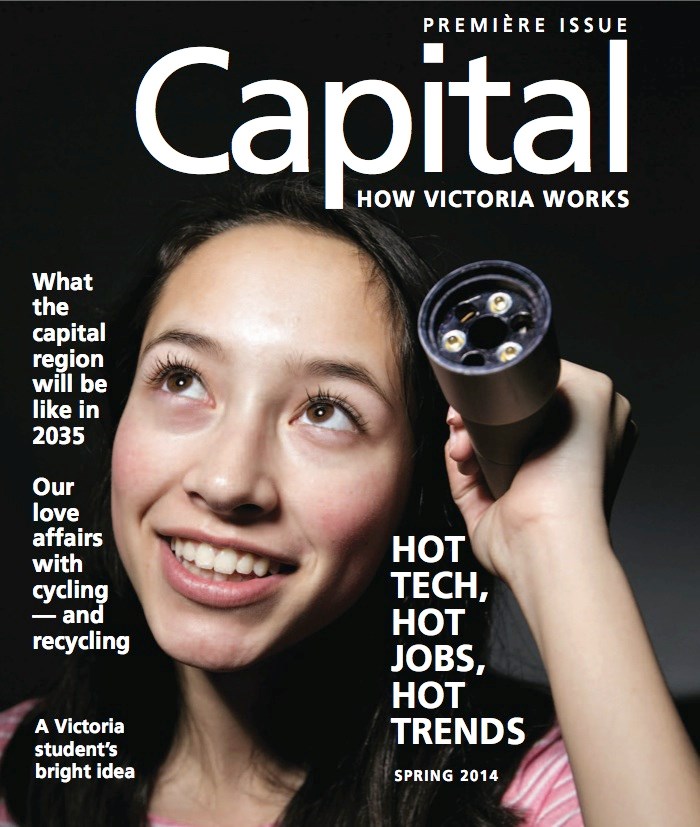With a hand in thriving local companies, retail development and cutting-edge technology, First Nations communities are playing a steadily increasing role in the region’s economy.
Just add up the impact of a few examples:
- Salish Sea Industrial Services Ltd., a pile-driving and dredging company, earned $9 million in marine contracts in its first year. A joint venture of the Esquimalt and Songhees First Nations along with Ralmax Contracting, it counts 10 aboriginals among 15 employees, a number expected to grow as the company gains more contracts.
- The Tsawout First Nation expects to generate 500 construction jobs and 1,000 to 2,000 long-term jobs with the development of a retail complex on the Saanich Peninsula.
- The tiny T’Sou-ke First Nation near Sooke has gained a big reputation as a leader in solar energy. The community has joined TimberWest Forest Corp. and EDP Renewables Canada in a $750-million wind-power project that could power 30,000 homes on the Island.
Aboriginal leaders across B.C. are putting economic development at the forefront, says University of Victoria assistant professor Brent Mainprize, who specializes in entrepreneurship and works with a number of aboriginal communities.
 |
|
Click on the cover to |
“It is the perfect storm at the moment,” says Mainprize, a faculty member at UVic’s Gustavson School of Business. He works on entrepreneurship with 25 First Nations communities in northwest B.C. through the Tribal Resources Investment Corp.
“Momentum has been gaining slowly, but I think in the last five or six years it’s just been exponential,” Mainprize said.
Andy Thomas, hereditary leader of the Esquimalt First Nation for more than 35 years, thinks it’s about time aboriginals played a bigger role in the wider community.
“We’ve been kept out of the economy for too long, but now we are back,” Thomas says.
The two barges and cranes that make up the Salish Sea Industrial fleet stand as reminders to the Songhees and Esquimalt nations and surrounding communities that a viable business is a path out of poverty and away from stereotypes.
“For us, Salish Sea Industrial is a big opportunity to become visible, because we’ve been invisible for a long time,” Thomas says. He notes that Ogden Point, now a cruise-ship terminal, once held a fish-processing plant and the sawmills that used to dot the city’s landscape had provided his generation with steady, well-paid work.
But as the economy changed, the work those industries provided dried up, leaving First Nations with fewer employment opportunities. “When I was a boy, we worked in fish or wood, but it was all gone in the 1980s,” Thomas said.
“We had 95 per cent employment back then. When it all fell out, we had 95 per cent unemployment.”
Salish Sea Industrial secured a $4-million deal to replace the Royal Victoria Yacht Club docks. It also recently struck a deal with the Greater Victoria Harbour Authority to drive piles for docks that will serve as a new service to shuttle cruise passengers from Ogden Point to the Inner Harbour.
“Having the opportunity to own a business gives our people a chance to be part of the workforce and make a decent wage,” says Thomas. “A worker can buy a new car or a computer for his child to go to school. This is a good beginning.”
Harbour authority CEO Curtis Grad sees more partnerships in the future. He notes the authority was incorporated in 2002 with provisions for the Songhees and Esquimalt nations to have representatives on the board of directors.
“There’s a very specific clause in our constitution that talks about working co-operatively with the nations on economic-development initiatives,” Grad says. “It’s something that’s been in our DNA since the day we were created [and] we’re really trying to put some momentum behind that now.”
The authority’s close links with the Songhees and Esquimalt people have already led to projects such as the Ogden Point breakwater’s Unity Wall, a mural created by First Nations artists.
In Central Saanich, the Tsawout First Nation will mark a new beginning this summer when construction begins on an overpass leading to a retail development it hopes will pump new life into its economy. It would connect consumers with the 650,000-square-foot Jesken Town Centre east of the highway, which will also begin going up in summer.
It’s a project — with the potential for thousands of jobs — that band members have been looking forward to for more than 20 years. Projections call for the retail centre to open in the first part of 2016.
“The community has been waiting patiently and they’ve been excited about this ever since we started getting close,” says Tsawout band councillor and former chief Allan Claxton.
Although Statistics Canada puts the unemployment rate for the First Nation at about 16 per cent, Chief Harvey Underwood says it’s really between 60 and 70 per cent.
“I think it will benefit the whole area,” Underwood says. “There’s opportunities for the four villages [of the Saanich Nation] and opportunities for the non-native people, too.”
Keith McRae, of the Property Development Group, which is a partner in the project, says although there is no formal agreement to provide a certain number of jobs to First Nations, “it is our collective goal through our partnership to provide job opportunities to the Tsawout First Nation.”
Near Sooke, the T’Sou-ke First Nation is already reaping some of the benefits of its own unique development, taking advantage of new technology to support traditional lifestyle values and help them thrive in a modern economy.
With a membership of about 250, the T’Sou-ke became the first aboriginal community in the world to be designated a solar community in 2013. Solar programs around the capital region and in several First Nations communities around the province have been modelled on what T’Sou-ke has done.
The First Nation is also in the process of developing wind power, an income-generating wasabi plantation and revitalizing the seashore. It has attracted academics from around the world to study its successes, offered mentorship to other aboriginal communities and placed an emphasis on culture.
“When we were all involved in developing a collective vision to provide a safe and healthy community, we looked far into the future and said: ‘What do we need to start right now to ensure a secure future for our grandchildren’s children?’ ” says T’Sou-ke Chief Gordon Planes. “Energy security, food security, cultural renaissance and economic self-sufficiency were identified as priorities.”
The band’s ambitious income-generating project involves building three large greenhouses with the goal of producing half an acre of wasabi a year. The root grows year-round, harvested every 12 to 15 months. Already, the project employs about 12 people.
The solar program, which included installation of photovoltaic panels and a solar hot-water heating system, created about 12 jobs with another eight people involved in home conservation programs. But it also provided inspiration and a model for others in the capital region. The T’Sou-ke run outreach programs that include tours for school children as well as an eco-tourism program, employing about another eight people.
The $750-million wind-power project — a partnership with TimberWest Forest Corp. and EDP Renewables Canada — could generate power for up to 30,000 homes, a significant number for the Island, which gets two-thirds of its electricity from the mainland. It’s expected to create more than 350 construction jobs and as many as 50 permanent jobs.
